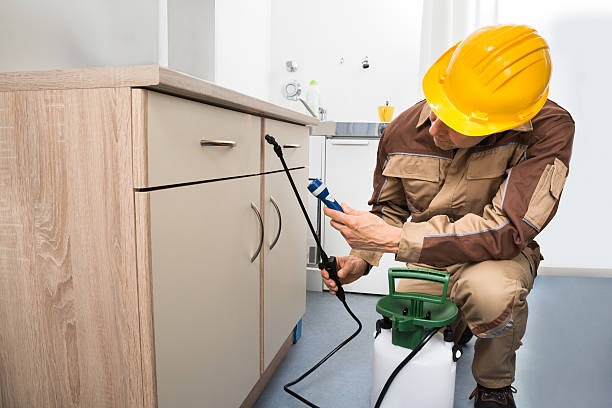Termite Prevention Checklist to Protect Your Home
Learning DIY termite prevention methods is something every homeowner needs to take seriously. Prevention is better than cure, and preventing termite infestation before it happens can help you to avoid costly damage to your house.
Below, you can find a comprehensive best practice checklist that each homeowner needs to follow to keep their home safe.
Termite Prevention Checklist
- Conduct Regular Inspections
Needless to say, the best way to prevent termites is to conduct regular inspections performed by pest control experts. Professional inspections will ensure that any issues are detected early, before any considerable damage that requires costly repairs has been done.
It is also important to conduct regular DIY inspections to look for termite evidence, such as “frass” or “carton” – the waste materials left behind by termites.
- Prevent Water and Moisture Leaks
Without a doubt, moisture and water damage is the number one reason why termites may enter your home.
Follow these termite prevention tips to make sure are able to find and correct any water damage early:
– Inspect and fix immediately any signs of dampness inside the home.
– Make sure that any shower heads, leaking taps, and toilets are fixed as soon as possible.
– Check whether air conditioning drip tubes leak against the walls of your house. If they do, direct the water away from your home or install a drain.
– Make sure that your guttering and roofing is in good shape and doesn’t cause any leaks.
– Make sure that your hot water systems aren’t leaking near the wall edge. If they do, direct the water away from the property or install a drain.
- Clear Any Weep Holes
Many times, termites are attracted by weep holes covered by mulch, soil, or vegetation along the outside perimeter of a house.
Seeing the bottom of each weep hole is crucial for termite prevention, as it allows you to recognize the first signs of termites, which usually look like mud trails. However, many homeowners tend to put garden beds, dirt, or grass clippings too close to the wall edge, making the home access for termites incredibly easy.
– Don’t use a sealant to block weep holes.
– Don’t cover weep holes with mulch, soil, or garden beds.
– Plant vegetation or garden beds at least several meters from your home.
– Don’t lay concrete or pavers in a way that obstructs weep holes.
– Pay attention to where you water with a hose or sprinkler systems.
- Avoid Specific Types of Mulch
Most homeowners give little thought to what type of mulch they use. However, certain types of mulch or wood chips not only attract termites, but they may be full of termites already.
– Never collect mulch from unknown sources off the side of the road.
– Always purchase termite-resistant mulch types.
– When dealing with landscape suppliers, always ask what type of mulch you are getting.
- Avoid Timber Structures Built in Direct Contact with the Ground
The construction of pergolas, decks, or other timber structures outside of your house should always be conducted with termites in mind. It is crucial to use special metal stirrups designed specifically to ensure that timber footings don’t come into direct contact with the soil.
– Always make sure that the correct materials are used, such as metal stirrups for footings.
– Always consult a pest control company and a builder before starting any construction.
– Follow all building code regulations to make sure your home is fully protected against termites.
- Do Not Store Unused Firewood and Timber
Many times, termite prevention entails removing any timber or firewood stored against the sides of your home. Not only this wood comes in direct contact with the ground, but it can also cover the weep holes. As such, it is crucial to keep any stored timber and firewood away from the walls to make sure you can clearly see the termite mud tracks going into the house.
- Inspect Jacuzzis and Spa Baths
Many homeowners choose to install jacuzzis or spa baths either in the backyard next to the house or recess them within a wooden deck. However, doing so creates an ideal environment for termite infestation: wood, water, and soil, all in one place.
– Do not install a jacuzzi next to the house wall.
– Do not install a jacuzzi on a timber deck, unless the right precautions were taken during the construction process.
– Consult a professional pest control company before installing your jacuzzi.
Final Thoughts
Termite prevention is a difficult job in itself. However, with this comprehensive termite prevention checklist and corresponding due diligence, keeping termites out is possible.
Just remember to follow all the best construction guidelines, conduct regular inspections, and consult pest control professionals when in doubt.

